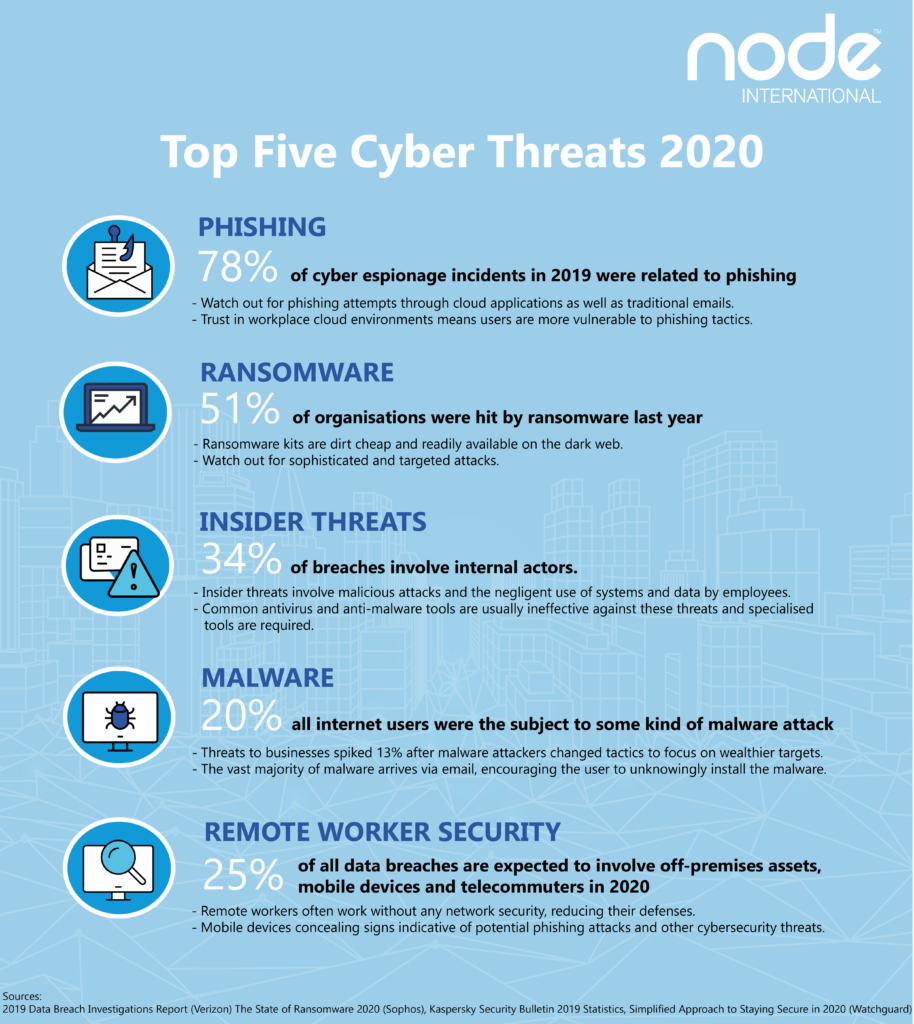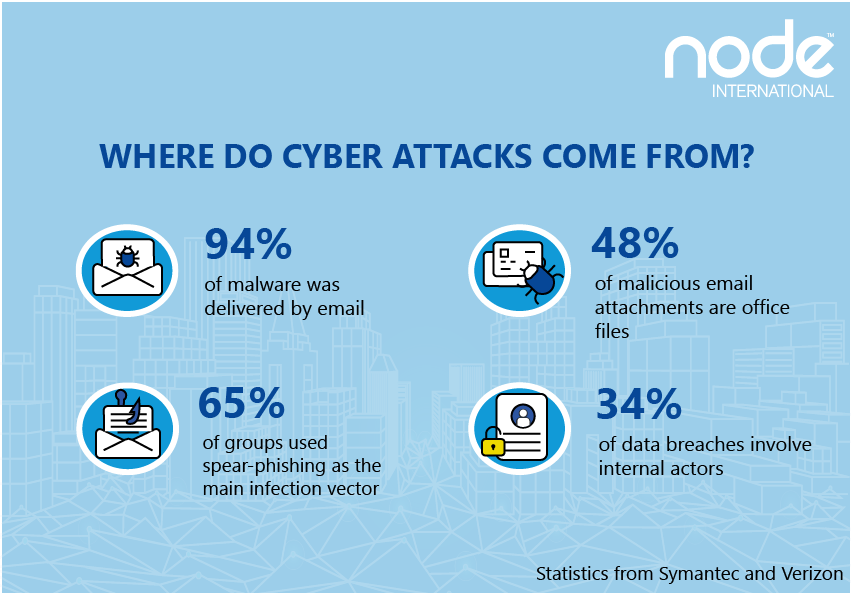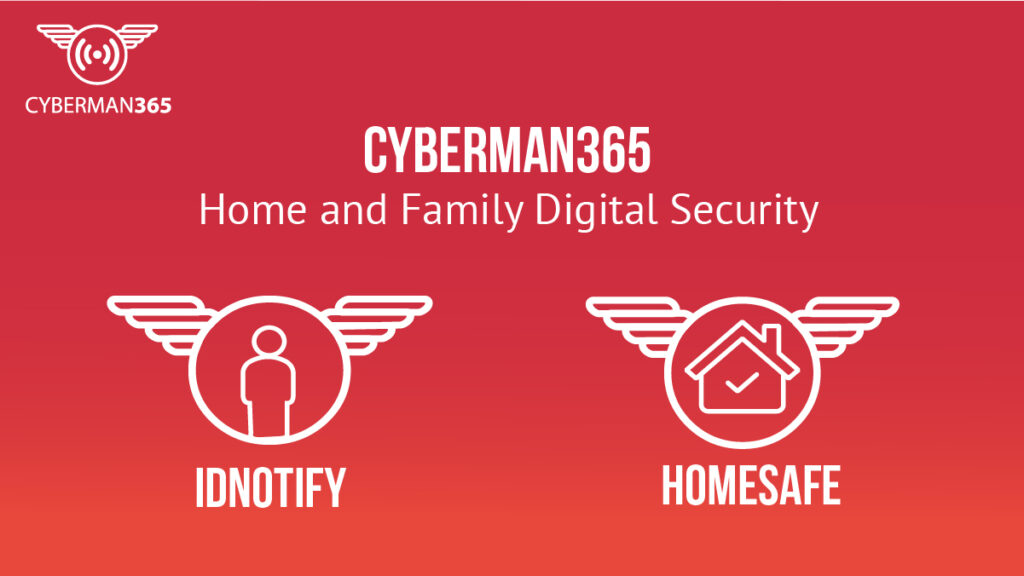Where should you focus your cybersecurity efforts?
These top five threats are a good place to start:
Don’t let phishing scare you, this is an easily avoided cyber threat avoided by changing bad habits, learn more about it in our article here.
Ransomware worries? Discover personalised methods of attack to watch out for and everything else you need to know here.
Keep an eye out for the rest of our in-depth articles covering all five cyber threats individually.





Recent Comments